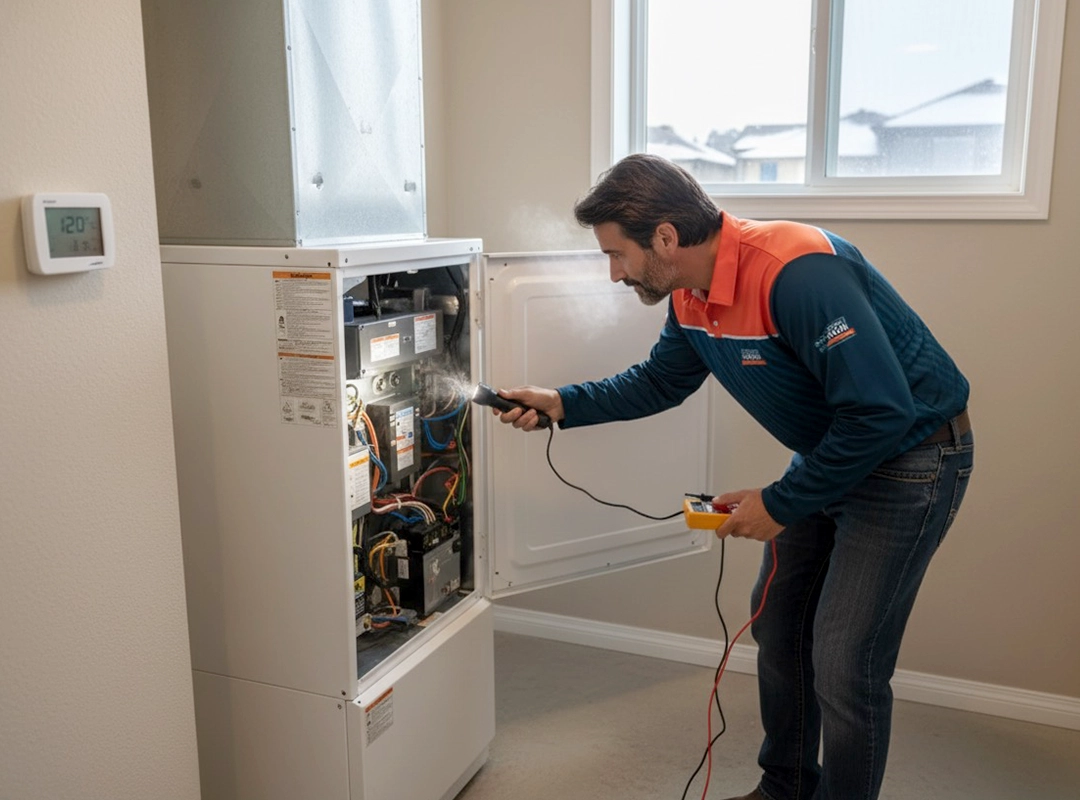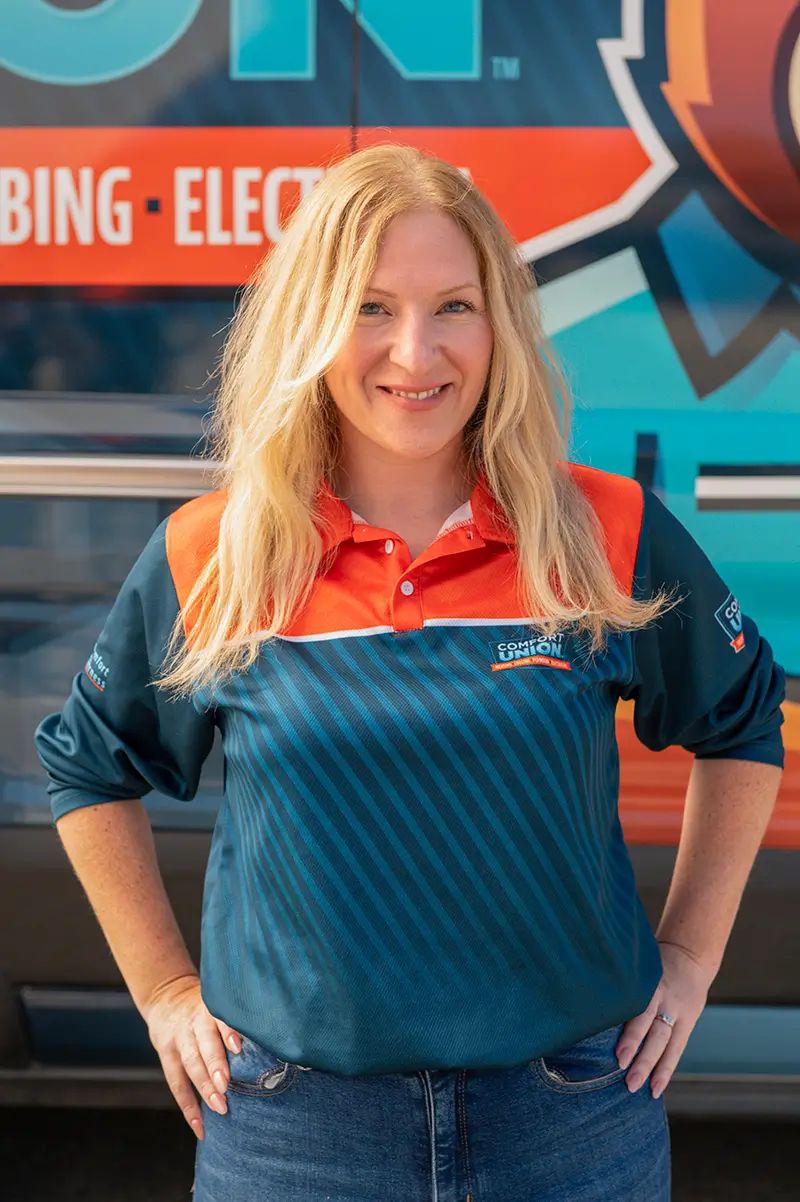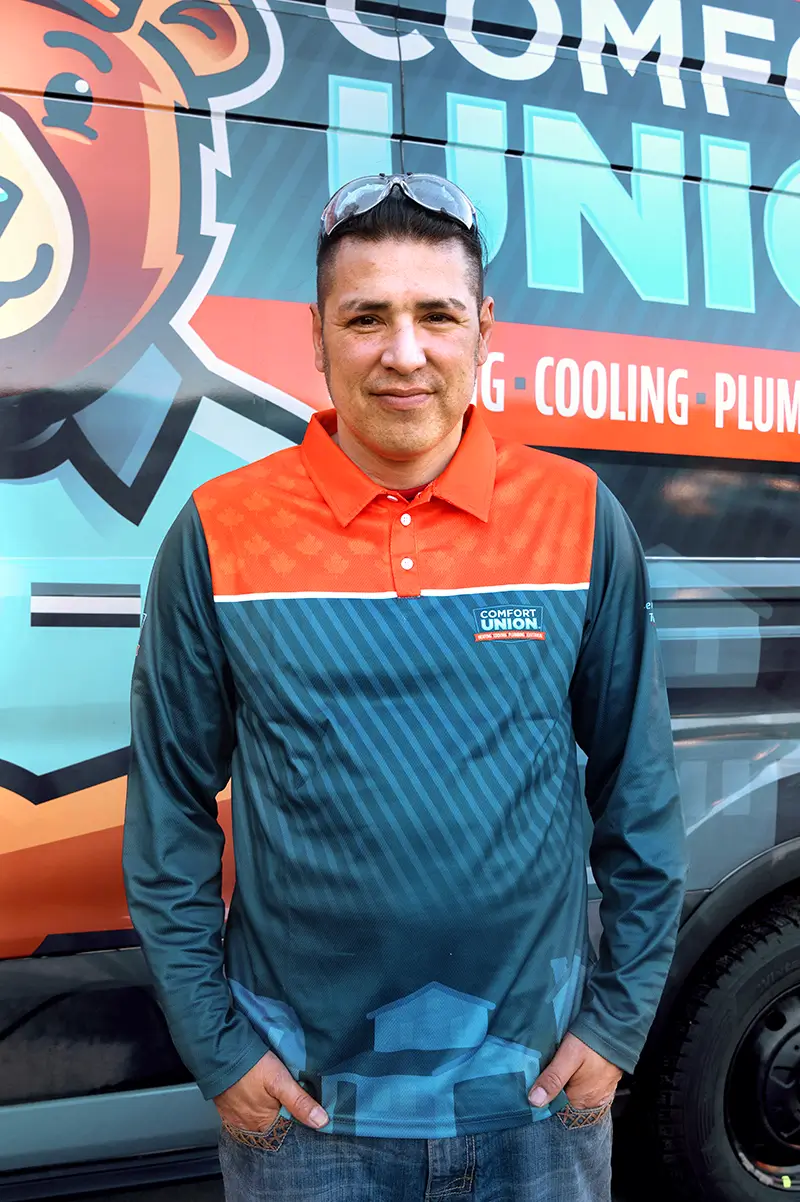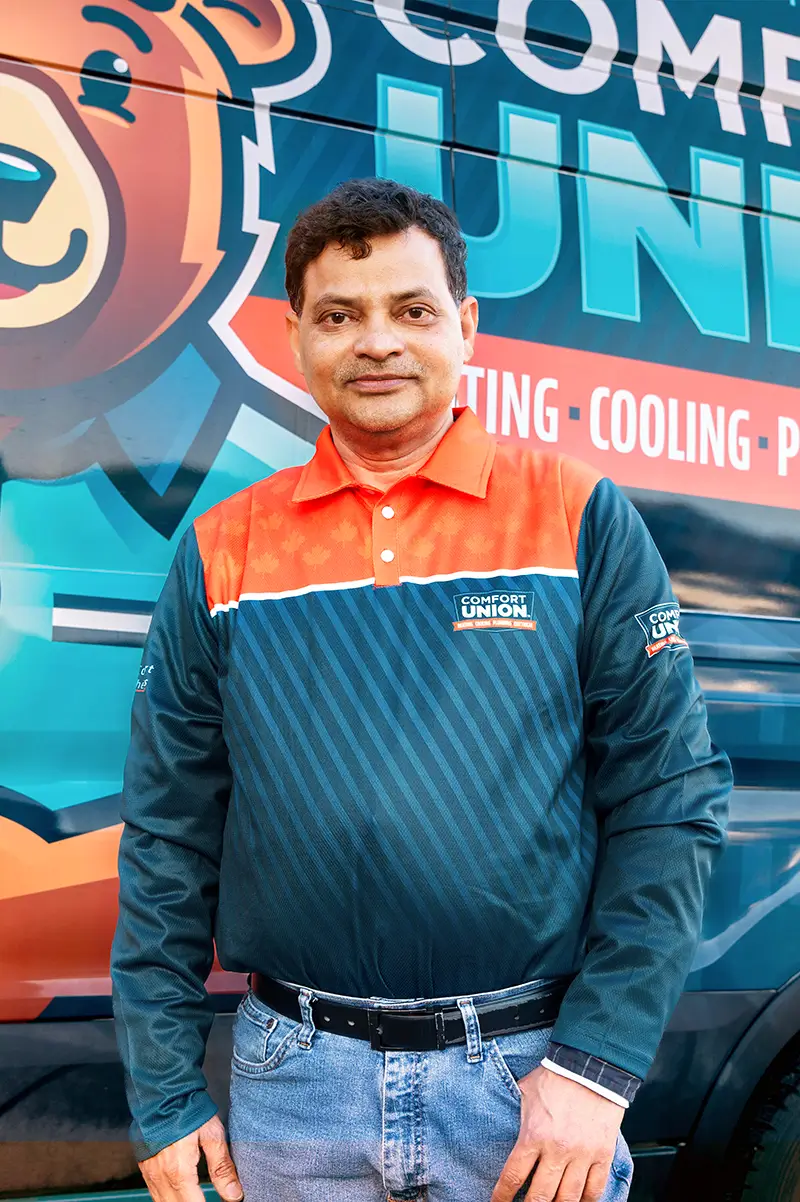If you’ve lived through even one Calgary winter, you know the drill: one day it’s mild and sunny, the next it’s -30°C with wind that feels like it’s straight from the Arctic. While you bundle up, your furnace is doing the same kind of endurance test, working overtime to keep your home warm and cozy. But all that hard work comes at a cost. In this article, we’ll unpack how Calgary’s harsh winters wear down your furnace, what warning signs to watch for, and how to prevent costly breakdowns before they strike.
Need a New Furnace?
With Flexible Financing Options
Why Calgary’s Climate Is Tough on Furnaces
Calgary’s weather is a furnace’s worst enemy. The long, unpredictable heating season pushes your system to its limits. Temperatures can swing 20 degrees in a single day, forcing constant on-off cycling that strains internal components.
When the mercury dips to -25°C or below, your furnace runs nearly nonstop just to maintain a comfortable indoor temperature. Add in Calgary’s famously dry air and fluctuating humidity, and you get more static, faster filter clogging, and increased metal stress from expansion and contraction.
Even outdoor factors like heavy snowfall, icy winds, and high altitude make things worse. Blocked exterior vents restrict airflow, while thinner air at elevation slightly affects combustion efficiency. It’s no wonder Calgary furnaces need more care than those in milder regions.
What Happens When Your Furnace Works Overtime
When your furnace never gets a break, wear and tear accelerate. Motors, ignitors, and heat exchangers all experience added strain. Filters clog faster due to continuous air circulation, trapping dust and pet dander. As efficiency drops, your energy bills rise, and so does the risk of unexpected shutdowns.
In extreme cases, an overworked furnace may overheat and trigger safety switches to shut down the system. That’s what we call short cycling: frequent starts and stops that waste energy and shorten the life of your unit. A furnace working this hard through Calgary’s winter deserves the same care as a car running every day through a mountain pass.
6 Common Furnace Problems Caused by Calgary Winters

So, what specific problems do Calgary winters cause for your furnace? Let’s go over them so you know what to expect, also.
1. Overheating and Short Cycling
Calgary’s long, cold spells cause your furnace to run constantly, often with limited airflow due to blocked vents or dirty filters. This can lead to overheating, tripped safety switches, and frequent restarts that strain your system.
2. Dirty or Clogged Air Filters
During winter, indoor air gets drier and dustier. Clogged filters choke your furnace, forcing it to push harder to maintain airflow. This not only reduces heat output but also increases energy use and stress on components.
3. Ignitor and Flame Sensor Failure
Cold air intake and condensation from freezing temperatures can interfere with ignition. When sensors can’t detect a stable flame, the system shuts down as a safety precaution, leaving you shivering until it’s fixed.
4. Blower Motor Fatigue
Your blower works harder in winter, running longer cycles to distribute heat evenly. Over time, the bearings and motor windings wear out, leading to weaker airflow or noisy operation.
5. Frozen or Blocked Intake and Exhaust Vents
Snow, ice, or debris can block your outdoor furnace vents, cutting off oxygen supply and triggering system errors. Clearing these vents after every snowfall is essential to prevent unexpected shutdowns.
6. Cracked Heat Exchangers
Perhaps the most serious issue, extreme temperature swings can cause metal fatigue and cracks in the heat exchanger. This can lead to dangerous carbon monoxide leaks, one reason annual furnace inspections are so critical for Calgary homes.
How to Reduce Furnace Stress and Avoid Breakdowns
You can’t control Calgary’s weather, but you can protect your furnace from it.
Replace your filters every one to three months during heavy use. Check your exterior vents regularly and clear away snow or ice buildup. Schedule a furnace tune-up and maintenance service before winter hits to catch potential problems early.
Improving your home’s insulation helps reduce how often your furnace cycles, while adding a humidifier can ease dry air stress and prevent dust buildup. A well-maintained system not only lasts longer but also keeps your home warmer and your bills lower.
Signs Your Furnace Is Struggling in Cold Weather
- Longer heating cycles or weak airflow through vents
- Unusual noises like rattling, buzzing, or banging
- Uneven room temperatures despite steady thermostat settings
- Higher utility bills even though your usage hasn’t changed
When to Call a Calgary Furnace Technician
Some problems need more than a DIY fix. If your furnace keeps short-cycling, emits strange odors, or blows cold air when it should heat, call a licensed technician immediately.
A yellow pilot flame, flickering ignition, or burning smell can signal combustion or electrical issues that are unsafe to ignore. Professional diagnostics not only pinpoint the problem but also ensure your furnace operates safely and efficiently through the worst of winter.
How Preventive Maintenance Extends Furnace Life
Think of furnace maintenance as an annual health checkup for your home comfort system. A thorough tune-up includes cleaning internal components, testing ignition and sensors, tightening electrical connections, and verifying gas pressure.
This simple habit can extend your furnace’s lifespan by years, improve energy efficiency, and prevent costly mid-winter emergencies. Comfort Union’s Calgary technicians specialize in preparing furnaces for the city’s extreme weather, so your home stays warm and stress-free all season long.
FAQs Calgary Homeowners Ask
Why does my furnace run constantly in winter?
Because Calgary winters are brutally cold, your furnace may run more often to maintain comfortable temperatures. However, if it never cycles off, you may have airflow restrictions, poor insulation, or thermostat issues.
Can extreme cold damage my furnace?
Yes, extreme temperatures can cause metal parts to contract and expand rapidly, increasing the risk of cracks, especially in older heat exchangers or flues.
How often should I service my furnace in Calgary?
Ideally once a year, before the heating season begins. Preventive maintenance helps detect early wear and keeps your system performing efficiently.
What temperature is too cold for a furnace to run efficiently?
Most furnaces are designed to handle outdoor temperatures as low as -35°C, but efficiency can drop sharply below -25°C due to longer runtimes and airflow challenges.

Fast, reliable furnace repair in Calgary. We diagnose and fix all makes and models to restore your home’s warmth quickly and safely.

Keep your system running smoothly with a professional furnace tune-up in Calgary. We clean, inspect, and optimize for peak efficiency and safety.

Breathe easier with professional furnace duct cleaning in Calgary. Remove dust, debris, and allergens for cleaner air and better system performance.














